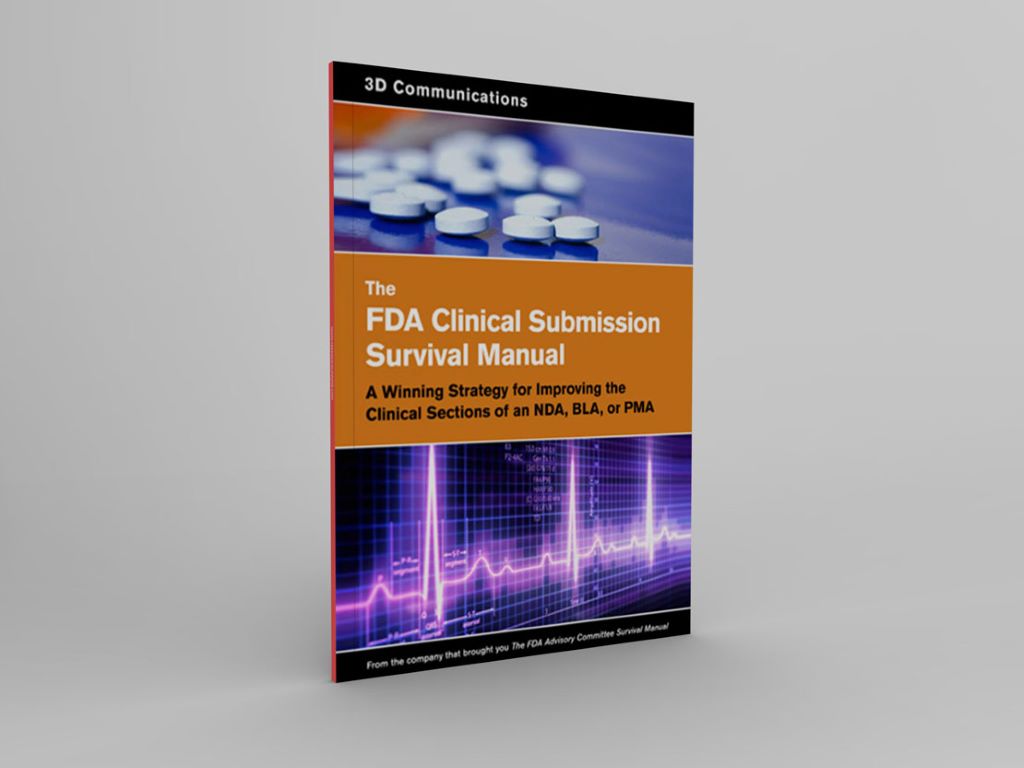The FDA Clinical Submission Survival Manual

Review by Meredith Brown-Tuttle, RAC
A regulatory professional’s primary role is communication with FDA, other regulatory agencies, and internal stakeholders in written and oral form. The quality of a regulatory professional’s communication skills can make or break a company. “The FDA Clinical Submission Survival Manual” contains useful tips and processes to improve FDA communication. It contains specifics on how to plan, develop and test strategy and key messages for a marketing application, with a focus on clinical data.
When I began reading this book, I had just finished writing and reviewing all the clinical sections of an NDA. As I read through the recommendations, I found myself nodding in agreement because I have used many of the tools presented in the book for managing my marketing application teams. I cannot emphasize enough the value of this book as it provides an easy-to-read introduction to best practices in communication and planning the marketing application. It includes ‘real world’ examples for bringing each lesson to life using practical implementation tools. Topics of note include:
-
Analysis, Content Development, and Testing (ACT) process. This process is the foundation for developing strategy and key messages for the regulatory submission.
-
How good intentions can lead to communication errors.
-
Selecting, organizing, and managing the marketing application team.
-
When clinical data finally comes in from the Phase 3 studies, techniques are provided on how to analyze, discuss, and interpret data as well as create messages and write the clinical section of a marketing application.
-
FDA communication and interaction tips include practical and common-sense techniques for interacting with FDA. These include bringing up all issues honestly, openly and discussing any issues prior to the marketing submission so the marketing application approval does not get delayed.
-
Suggestions for an external review of the marketing application and messages by other members of the company and consultants so any holes and discrepancies in the application can be discovered and addressed. These holes and discrepancies are often not found by the development team as they may be too familiar with the data to recognize them.
-
How to enhance objectivity when interpreting clinical data.
-
How to develop the product communications compendium using the product element process. This includes how to proactively dissect your application and strategy for potential issues and how to mitigate risk.
-
Presenting scenarios to address potential FDA disagreement with a Sponsor’s position.
-
How to address and test risk management requirements.
-
How to test strategy and clinical content internally.
The tools and lessons outlined in this book can be applied immediately, especially the long-term timelines for FDA meetings and marketing applications. Additionally, the excellent graphics in this book dramatically assist in reader comprehension. The book could be a good primer for those interested in moving up the ‘ladder,’ especially for those wanting to understand the marketing application planning process and accompanying pitfalls. It also will be useful for those at a senior level who have been through the NDA process but would appreciate external validation or support for implementing new processes.
Meredith Brown-Tuttle, RAC, is the chair of the RAPS Publication Task Force. She is a consultant for Regulatorium.com, an instructor for the UC-Santa Cruz Regulatory Certificate program, and author of “IND Submissions: A Primer” and “Regulatory Intelligence 101.” She can be reached at theregulatorium@gmail.com.